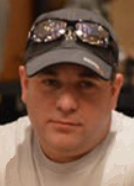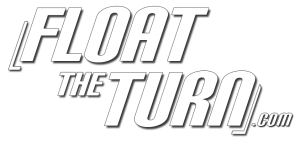 By James Iglinsky
By James Iglinsky
Since 2010, I have been traveling to Las Vegas from Houston to play in a WSOP event. I don’t get the opportunity to play much, as the closest casino game is 2.5 hours away and I will not play in any of the local raked home games.
Leading up to this year’s WSOP trip, I began a heavy study schedule watching videos and playing hand packs from InstaPoker. Then I joined Jonathan Little’s online training site, floattheturn.com. I enjoyed his teaching style and how easy his content is to read and understand. In one article Jonathan explained how Tim Ferris significantly influenced his life when he began following Tim’s Four Hour Body program and changed his eating habits. One of my goals this year was to lose weight and become healthier so it seemed like a good fit. I picked up a copy of the Four Hour Body and am happy to say that, for me, it has been really easy to follow and I have now lost 21 pounds in 35 days. I believe this played some part in my ability to focus during the Colossus as my memory has improved and I was never exhausted.
From my previous experiences in the WSOP I knew that I would be forced into some difficult decisions early, and I was not disappointed. Jonathan Little’s videos allowed me to be more aggressive in position against weak blinds, to fold AQ, and to even 3-bet and take down a few uncontested pots. I would like to provide links to the specific videos that have helped me the most, but honestly, I have not viewed a single video, attended a webinar, or watched Jonathan live on Twitch without learning something. The area where I have improved the most is my ability to define my opponents’ ranges. While I have been aware of this for years, and have had access to Poker Stove, I just didn’t really look at it with a critical eye. While I believe that I am far from making the best decisions possible, I know I have vastly improved in this essential area of decision making.
 Since I only get to play a live game about once every two months, my opportunities to improve are limited. As a result, I treat this trip to Vegas as a vacation first, and a money-making opportunity second. While playing in the Colossus, I attempted to take notes as recommended by Jonathan, but since I have not practiced, I found that I was too slow. I also typed notes into the Note app on my phone, and later posted everything I had on Twitter. I made many decisions based on reads, position, and stack sizes (mine and my opponents’).
Since I only get to play a live game about once every two months, my opportunities to improve are limited. As a result, I treat this trip to Vegas as a vacation first, and a money-making opportunity second. While playing in the Colossus, I attempted to take notes as recommended by Jonathan, but since I have not practiced, I found that I was too slow. I also typed notes into the Note app on my phone, and later posted everything I had on Twitter. I made many decisions based on reads, position, and stack sizes (mine and my opponents’).
Compared to my play before studying with Jonathan, I more frequently attacked a single limper and the blinds from late position, and I was rewarded for it. Not only did I bag chips once, I bagged twice in the Colossus and when I got knocked out there were only 7 tables left. I earned a 67th place finish for a payout of $14,330. Additionally, I jumped into a $50 last longer posted on 2+2 with 41 others and took it down for an additional $2,100. While in Vegas I also ran deep in two other tourneys, actually bagging chips in one, and was dramatically busted in both before the money. Overall an amazing trip. This was the first time I had bagged chips since 2010, and it was my first WSOP cash. Amazing, fantastic, and wonderful are the words that come to mind.
During the Colossus I experienced tremendous drama as I started with 5,000 chips, bagged 26,000 on Day 1c, then bagged 157,000 on Day 2, and amazingly made it up to 1.45 million chips during day three before I called a “shorty’s” all in with A-Jo and lost to his 3-3 leaving me with 997,000. Then I played this hand and lost about 835,000 chips:
I have replayed that hand a lot in my mind. Until last night I thought I was right to go with my read of his hand strength and try to make him fold. Since we were down to so few players, maybe I should have considered that we were all guaranteed $10,000 and that he wasn’t folding any pair, or maybe my bet on the turned Q did not make sense if I had a Q, so his Ace kicker was good? I just don’t know. Should I have continued on the turn and checked the river with some thin show down value, or should I have check-shoved the turn, or just shoved the turn? I was confident in my read that he did not have an over pair, and that he did not have a 9 or Q. Post flop he was clearly uncomfortable, so 77 or 66 made sense, as did AKo, 65 suited+, AJ suited+. I have no doubt he would have snapped it off if he had a Q on the turn, based on the few hands he had played.
((Jonathan’s comments: It seems like you got a bit fancy in this hand and it cost you. I would have certainly checked preflop. I can’t remember the last time I raised tiny over limps with the intention of trying to represent a premium hand after the flop. Most of the time, your opponents will not be capable of hand-reading well enough to remember what took place preflop.
Assuming you decided to reraise small preflop, I think your flop bet is great, both for value and protection. When you get called and the turn is a Queen, I think you should actually check-fold. It is way too likely that your opponent has a slowplayed 9, a straight, or top pair. Of course, he could also have an 8 or an underpair, but you are in fine shape versus most 8s and you beat the underpairs. I see no reason at all to play a big pot in this situation.
That being said, you mentioned you had a strong read on this player, but in general, I do not trust my reads enough to run a bluff for all of my chips with a hand that should have a reasonable amount of showdown value, especially if the pot checks down. If I bet the turn and got called, unless the board drastically changed on the river, I would have given up. Again, I am not a fan of running huge bluffs, especially in tournaments that are somewhat soft. Most of the time, it makes sense to just sit back and wait for prime situations where the money falls in your lap.))
In closing, I want to say “thank you” to Jonathan Little for his training and guidance.
